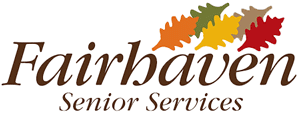 Adaptive equipment is devices that are used to assist with completing activities of daily living such as dressing, bathing, grooming, etc. Adaptive equipment allows people to live more independently. As people age or lose function due to health problems they may need to use adaptive equipment. Some examples of Adaptive Equipment:
Adaptive equipment is devices that are used to assist with completing activities of daily living such as dressing, bathing, grooming, etc. Adaptive equipment allows people to live more independently. As people age or lose function due to health problems they may need to use adaptive equipment. Some examples of Adaptive Equipment:
Eating and Dining
- Divided plates – keeps food separated and provides more surface for scooping of food. This plate is beneficial for someone who has decreased hand coordination.
- Scoop or high sided dishes – ideal for persons with limited coordination or use of only one hand.
- Nose cut out tumblers – enables drinking without tilting your head. Ideal for those who have neck motion limitations or have a neck brace.
- Lidded cups – ideal for those who have tremors to decrease spilling.
- Built-up handle utensils – ideal for those who have difficulty holding things in their hand. Useful for those with arthritis or limited movement of fingers.
- Rocker knife – good for those who only have use of one hand allowing them to cut up their food.
Dressing
- Button and zipper aids – ideal for those who have difficulty with manipulating small objects.
- Dressing sticks – makes putting on pants and removing socks easier. It is essential for anyone who has difficulty bending or the use of only one arm.
- Reacher – allows for items to be picked off the floor and can assist with lower body dressing. Ideal for those with balance issues.
- Sock aid – helps to put on/off of socks independently. For people who cannot reach their toes or are at risk of losing their balance when bending over.
- Elastic shoelaces – regular laced shoes become “slip-ons” with the use of elastic shoelaces eliminating the need for tying. Ideal for those who cannot reach their feet or are having difficulty tying their shoes.
- Long-handled shoehorn – eases ability to take on/off shoes while decreasing the need for bending. good for those with arthritis or balance deficits.
Bathing
- Long-handled bath sponge – allows people with limited reach or difficulty bending to wash feet and lower body.
- Foam tubing – can be fitted on brush, toothbrush, and razor to make it easier to hold for those who have arthritis or have difficulty holding items.
- Extended tub bench – allows for one to safely get in and out of the tub without stepping over the tub. The bench extends outside of the tub.
- Nonskid bathmat – prevents slipping in the shower or tub.
- Toilet seat risers or toilet commode chairs – for those who find it difficult to go from sitting to stand off the toilet.
Kitchen
- Cutting board with pins – holds food in place while cutting; good for those with use of only one hand.
- Dycem bottle openers -to open jars or medicine containers for someone who has weak grip strength.
- Walker Trays – a tray that slides over the to of your walker for transporting items around the house.
Please contact Greenfield Rehabilitation 262-473-2140 Fairhaven Senior Services, 435 Starin Road, Whitewater, WI 53190 for more information regarding these and many other adaptive equipment options. They will be happy to assess your needs, assist you in obtaining such items and provide training to ensure optimal effective use that will help maintain your ability to perform tasks independently and enhance your quality of life.
Difficulty with putting on your socks and shoes, opening a bottle of water, or buttoning your shirt? If you are struggling to perform daily tasks, finding the right solution might take some investigation. There is a variety of adaptive equipment that can make your life easier and more convenient. Please contact the therapy department if you are having more difficulty with your daily activities and want to learn more about how you can maximize your independence and overall quality of life!
